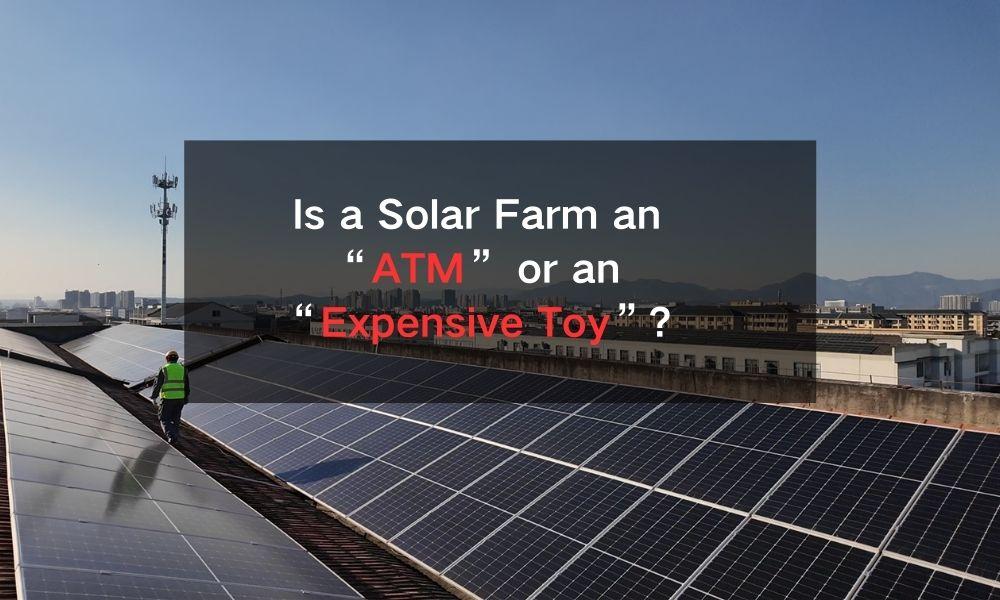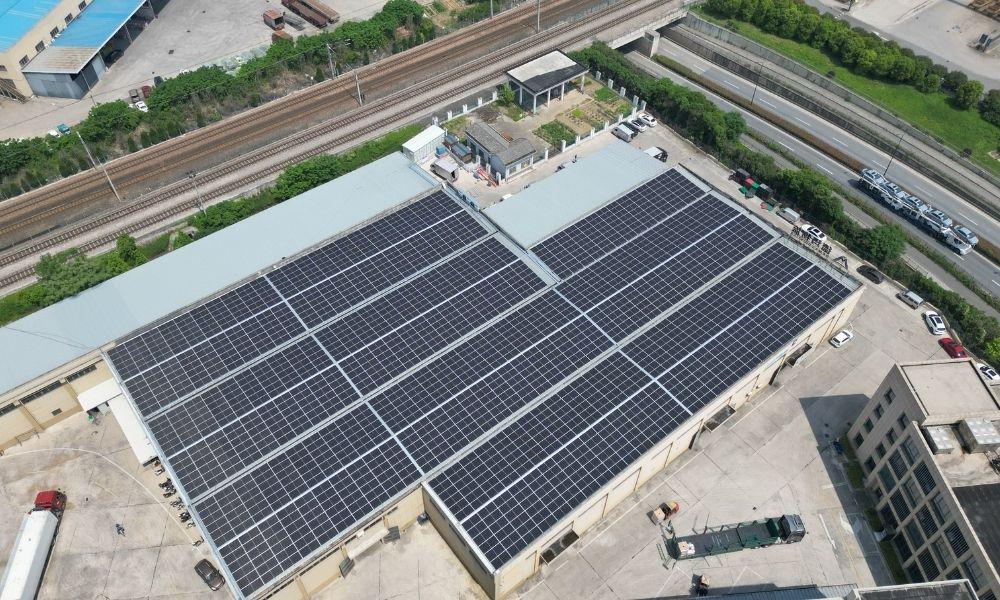Is a Solar Farm an “ATM” or an “Expensive Toy”?

Sun = Power Generation: Lower Electricity Bills
Solar energy is abundant and inexhaustible, with the sunlight reaching Earth being 6,000 times greater than current human energy consumption. Additionally, solar energy is widely distributed; wherever there is sunlight, solar systems can be utilized, regardless of location or altitude. For factories and households, the sun is like a daily free delivery service, and solar panels become your “money-making machines.” Once a solar power system is installed, electricity is generated as soon as the sun shines, allowing for self-consumption during the day and directly reducing electricity bills.
Short-Term Investment, Long-Term High Returns
The value of building a solar farm extends beyond electricity generation. It can effectively reduce indoor temperatures by 2-3°C, indirectly saving on air conditioning costs while providing insulation in winter. Additionally, it promotes energy conservation and emission reduction. For instance, a small 3 kW distributed generation system can produce 36,250 kWh over 25 years, equivalent to saving 36.5 tons of standard coal and reducing CO2 emissions by 94.9 tons.
Thus, solar power plants offer a “power generation plus” multi-benefit solution, representing a savvy investment logic of “short-term investment, long-term high returns.” With a relatively clear incremental cost (e.g., an additional 200-300 yuan per square meter), one can leverage substantial long-term power generation benefits (e.g., 140W+/m²) and immeasurable added value, making the investment return logic clear and attractive.
To illustrate the economic viability of solar projects, consider a practical calculation for a 1,000 m² commercial rooftop project in Hangzhou:

First, let’s calculate the incremental investment cost. For this 1,000 m² project, the installation cost for a solar power plant is: 2.5 yuan/W * 220 W * 1,000 m² = 550,000 yuan.
Next, consider the revenue. This project adopts a self-consumption and surplus electricity feed-in model, with an estimated capacity of about 150 kW. Based on Hangzhou’s sunlight conditions, the annual electricity generation is approximately: 220 kW * 1,300 hours = 286,000 kWh. Assuming all generated electricity is consumed by the building (which is nearly always the case in commercial settings), and using a constant commercial electricity price of 0.7 yuan/kWh (actual prices may be higher, especially under peak and off-peak pricing), the annual revenue would reach about 200,000 yuan.
Now, let’s calculate the payback period. Dividing the total incremental investment of 550,000 yuan by the annual revenue of 200,000 yuan gives approximately 2.75 years. This means that under ideal conditions with full self-consumption, the investment can be recouped in about three years. Looking at the total investment of the entire solar system, it can be recovered in about five years. Whether considering the return on incremental investment or the overall project return, this investment yields lifelong benefits.
Moreover, this is just a calculation for a medium-sized project. For larger projects, economies of scale will further reduce unit investment costs, making the investment return even more attractive.
Returning to the initial question: What is the economic viability of solar projects? Through the analysis and examples presented, it is clear that when one correctly understands its multiple attributes and views it as a long-term, cash-generating green asset, the economic benefits of investing in solar power plants are substantial. Not only does it address electricity needs, but it also transforms roofs into value-generating “power stations.” For owners focused on sustainable development and long-term benefits, this is undoubtedly a worthwhile option.
Installing solar panels is like equipping your roof with a “24-hour ATM,” and the returns may be more favorable than you think.